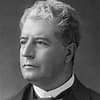
NO AMOUNT OF MONEY SEEMS TO HELP!
Recent data from the Australian Institute of Health and Wellbeing (AIHW) reveals concerning statistics regarding Indigenous children in Australia’s care and protection system. As of June 2022, approximately 24,600 Indigenous children were under care and protection orders, marking an increase to 72 per 1,000 children from 62 per 1,000 four years prior. Notably, nearly a third of these children fall within the age bracket of 10 to 14.
Despite constituting only 5 percent of Australia’s child population, Indigenous children comprise almost half of those within the child protection system. The percentage of Indigenous children placed with relatives for out-of-home care rose from 50 percent in 2017 to 54 percent in 2022. However, out of the total 19,000 children in out-of-home care, not all could be placed with family, with 14,000 classified as being in long-term care, separated from their primary family for two years or more. Additionally, 70 percent of those with at least one sibling in out-of-home care were fortunate enough to be placed with at least one sibling.
These figures underscore a worrying trend, indicating a failure to meet the objectives outlined in the “Closing the Gap” strategy, which aims to reduce Indigenous children’s placement in out-of-home care by 45 percent by 2031. Despite substantial government spending, estimated at $4.2 billion annually on Indigenous children related issues, progress toward this goal remains inadequate.
Prime Minister Anthony Albanese, in his address regarding the Closing the Gap initiative, announced the establishment of a national commissioner for Aboriginal and Torres Strait Islander children, emphasizing the imperative of strengthening families and ensuring children’s safety. However, reports such as the one by the South Australian Commissioner for Aboriginal Children and Young People, April Lawrie, highlight ongoing challenges. Lawrie’s report suggests that if current trends persist, the number of Aboriginal children in out-of-home care could increase by 50 percent over the next decade.
Key recommendations include the establishment of Aboriginal Children’s Commissioners in each State and Territory, along with a national coordinating body. Additionally, there’s a call for the development of a national strategy to address the over-representation of Indigenous children in out-of-home care.
Issues such as lack of access to safe and stable housing further exacerbate the situation. Data from AIHW and the National Indigenous Australians Agency indicate significant housing disparities, with Indigenous people being disproportionately impacted. They are significantly more likely to live in social housing, access homelessness services, and reside in overcrowded homes, reflecting broader socio-economic challenges that contribute to the vulnerability of Indigenous families and children.





Are they blaming the white fellow for this and will there be another claim for so called Stolen Generation some years down the track?